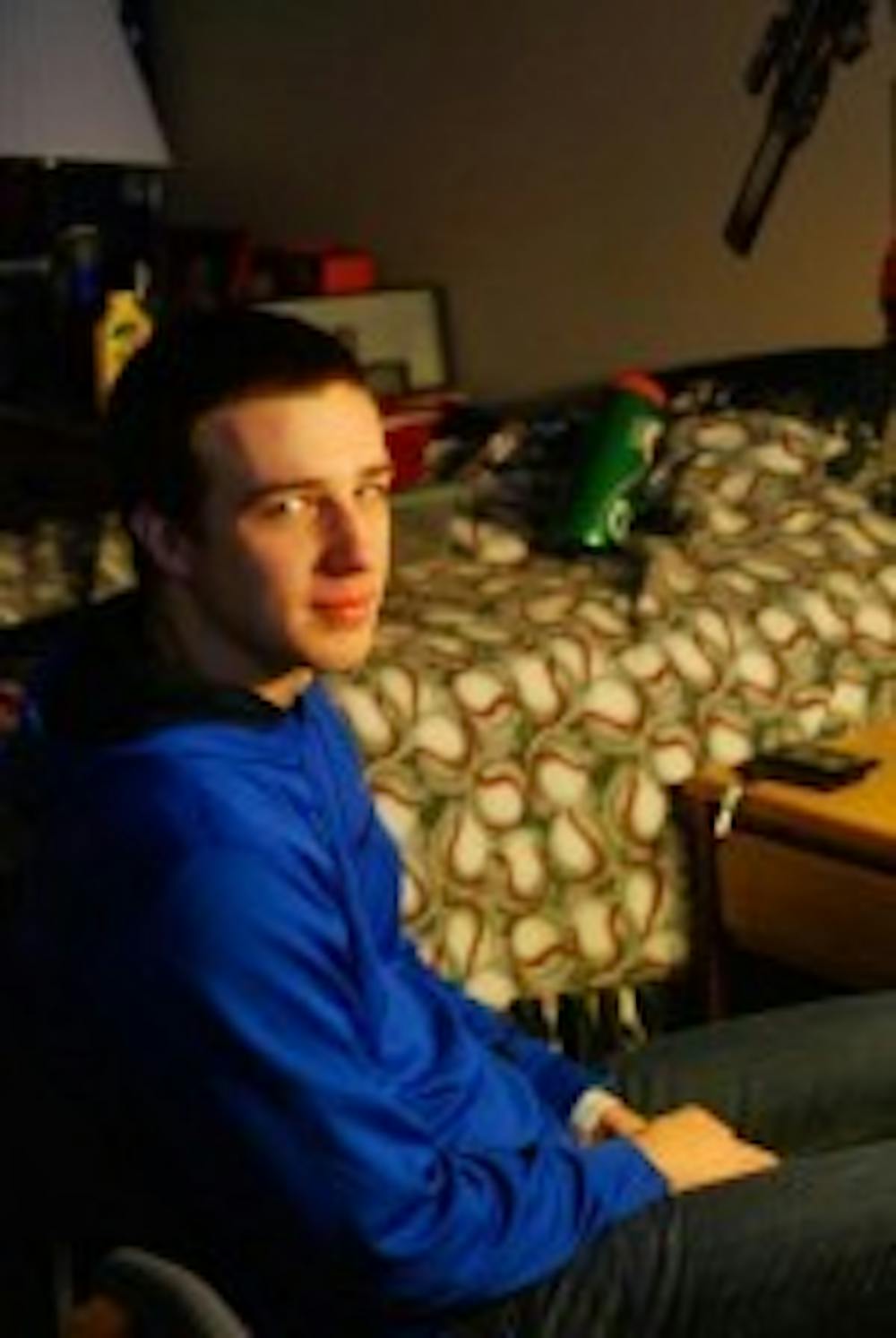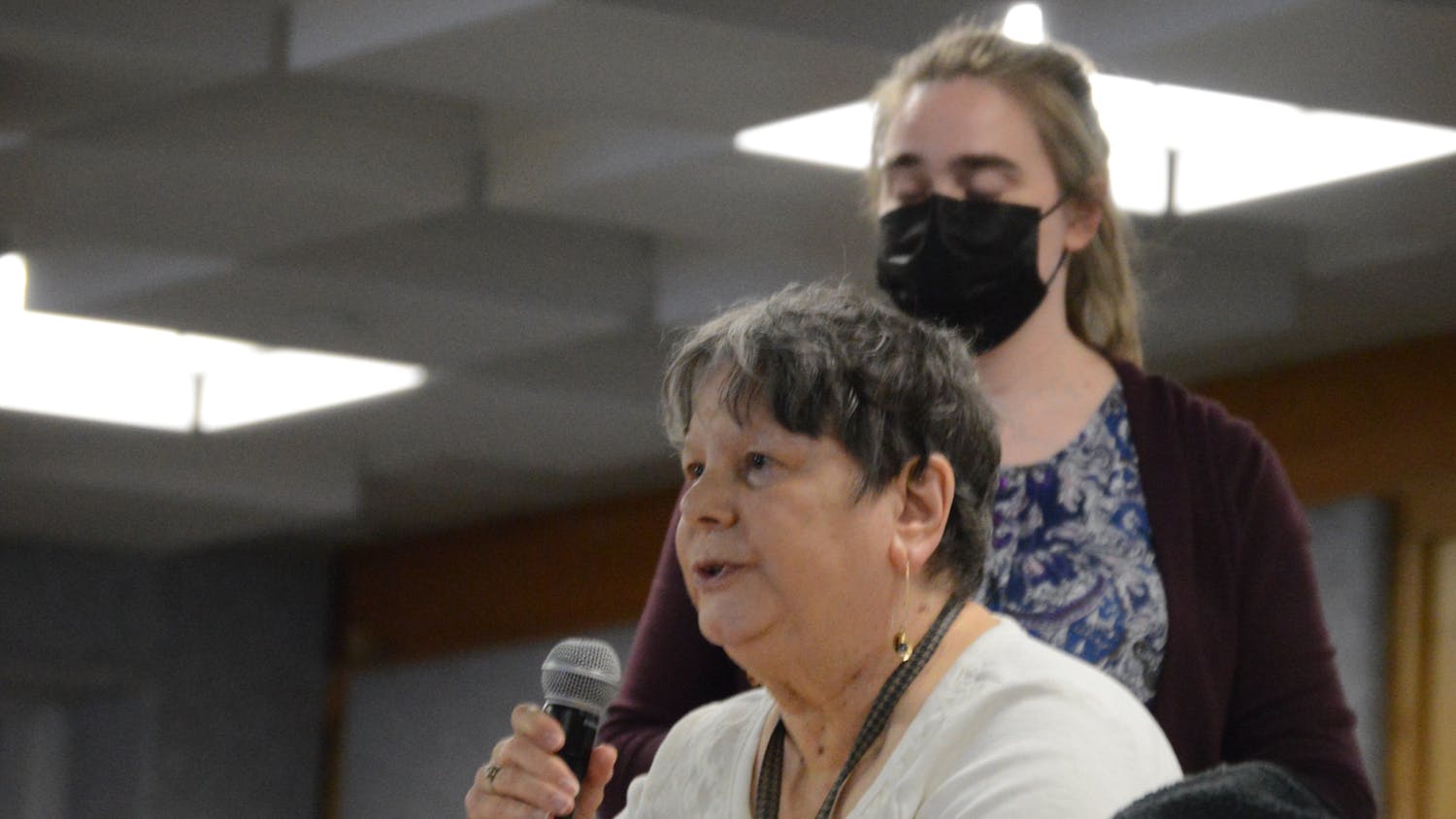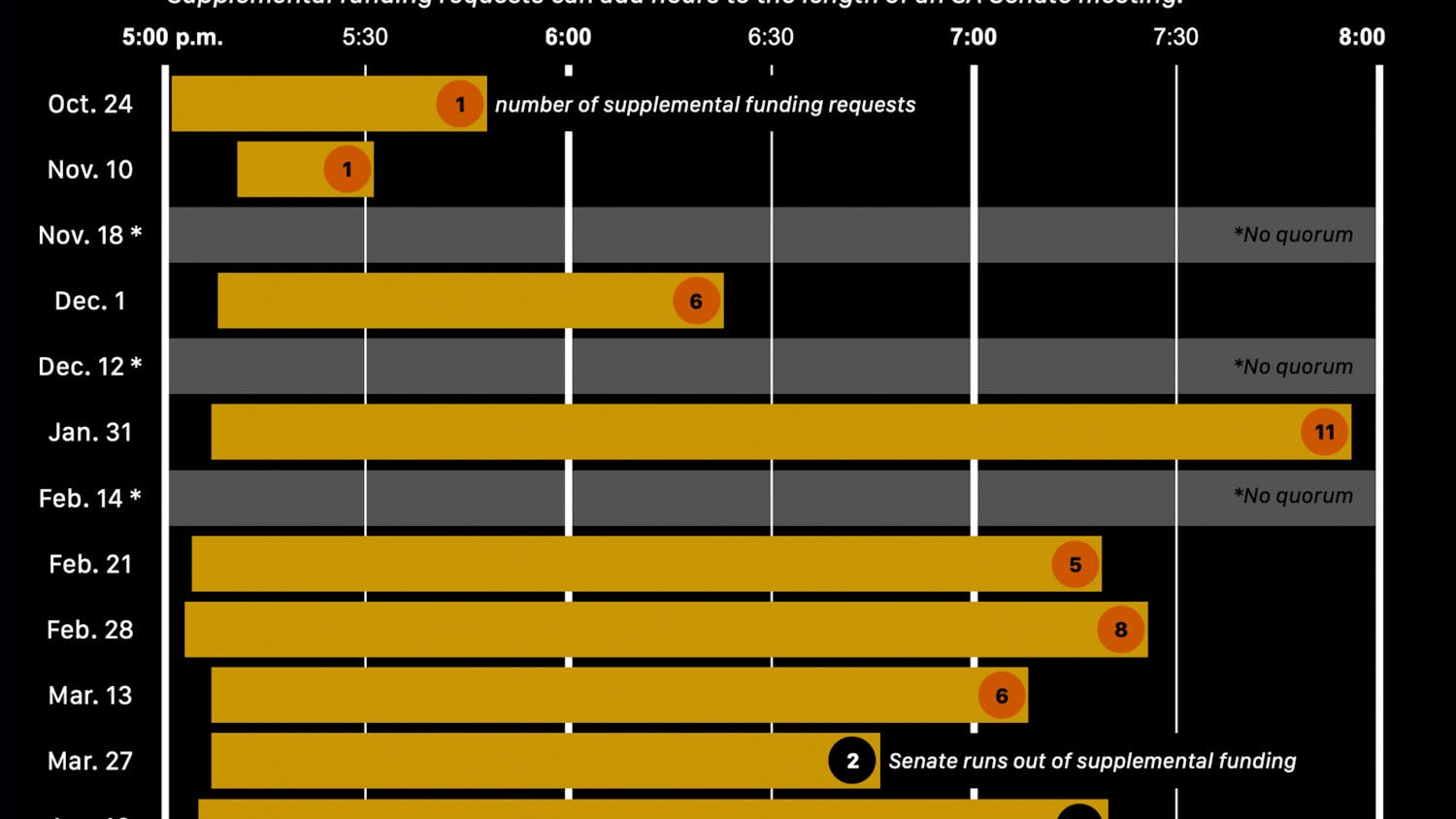Richmond roommates Neil Campbell, Bennett Sciacca and Tijo Mathew were three of four students hospitalized late Sunday night after carbon monoxide reached their dorm room in Richmond Hall. Three others received medical attention on campus.
The three 18-year-old freshmen felt lightheaded, dizzy and numb. At least four other students felt similar symptoms. The two carbon monoxide detectors that were supposed to be on the Richmond Building 5 floor were missing, so the poisonous gas went undetected and rose to the top of the dorm.
Campbell, an exercise science major, said he felt like he was going to pass out while watching a movie in his dorm because of "the worst headache in his life" that night. He couldn't feel his hands.
Mathew, a psychology major, felt lightheaded and "drunk."
Not knowing the symptoms were related, the two went to Urgent Care while Sciacca, a business major, was sleeping. Urgent Care sent the pair to Millard Fillmore Suburban Hospital, where doctors found Mathew's carbon monoxide level was 27 times the normal level and Campbell's was 26 times the normal level.
The hospital contacted UB immediately to check on Sciacca, who was sleeping in his dorm.
Upon arrival, University Police found Sciacca very pale and he could barely stand. Doctors told Sciacca his carbon monoxide level was 17 times the normal amount.
"If we tried to sleep it off, we probably would not have woken up the next morning," Campbell said.
The leak happened because a hot water boiler on the ground floor malfunctioned. A piece of the boiler shifted approximately an inch and the exhaust gas, which contains carbon monoxide, didn't ventilate out of the building properly, according to Vice President for University Communications Joseph Brennan.
The detectors were missing when maintenance workers checked on Sunday night, though Brennan said UB passed the annual fire control and prevention dormitory inspection in October. The Spectrum asked for documentation regarding the inspection, but UB did not provide it by the time of press.
Brennan said UB is compliant with Amanda's Law, which protects New York State citizens from accidental carbon monoxide poisoning by requiring carbon monoxide detectors in each sleeping unit on the same floor as a carbon monoxide source.
The source of carbon monoxide is on the ground floor of Richmond, so detectors are only required in the two suites there, according to the New York State Division of Code Enforcement and Administration."
UB is now going "through extraordinary measures" and installing detectors on each floor of Richmond, according to Andrea Constantino, the director of Campus Living. But Campbell, Sciacca and Mathew still aren't happy with UB's response. They feel the university is ignoring them personally.
Sciacca is concerned with whether UB will send his hospital bill home or take care of it for him. So far, no one from the university has reached out to him. He noted UB did not check if he and his roommates had transportation from the hospital and they had to ask friends for a ride home.
Campbell said Bianca McGraw, Richmond's hall director, and Ryan Spearer, assistant hall director, came to check on him and his roommates - the only contact he had with university officials. However, Sciacca was not present at the time of their visits.
"I don't feel the university is going to take any measures to reach out to us in any way," Sciacca said. "I do feel when they came here, it was just them checking up. I don't think it is going to go any further than that."
Sciacca said when he and his roommates moved into the dorms, they were only briefed about smoke and fire detectors - not carbon monoxide detectors. His father looked into the law that requires detectors near potential leak sources, and his mother is talking to government officials to see if this type of incident can be prevented in the future.
Sciacca said he has been thinking about transferring and this occurrence has confirmed his decision to leave the university.
The New York State Office of Fire Prevention and Control states Amanda's Law - effective Feb. 22, 2010, which protects New York State citizens from the No. 1 cause of accidental poisoning deaths in the nation - is not practical or enforceable for each building.
While UB is compliant, the biggest concern is that people can still get poisoned, the office said.
To prevent similar events in the future, UB will immediately add more plug-in detectors to each Richmond dorm floor, according to Brennan. In a few weeks, hardwired ones will be installed into the ceilings in all Ellicott dorms. The university will further analyze where detectors are needed on campus, Brennan said.
All SUNY schools fall underneath Amanda's Law, but the amount of detectors varies from school to school because each school heats buildings differently.
For example, the University at Albany has only one quad with a carbon monoxide source near the living quarters. In that area, the university installed hardwired detectors - approximately 824 of them in 200 rooms and their surrounding hallways - in the past two years for an approximate total of $138,000, according to Greg Amyot, the fire protection supervisor at Albany.
The new 500-bed apartment complex at Buffalo State College, located on Grant Street, has two hardwire detectors in each unit. Each unit consists of four bedrooms, grouped in twos, and the building is heated by a local natural gas boiler. Detectors are required within 15 feet of each sleeping area in accordance with the law, according to Jerod Dahlgren, Buffalo State's spokesperson.
The older dorms do not have detectors in the rooms because the boilers and back-up generators are located on non-sleeping floors - similar to UB's setup. Detectors are located in the basement with the gas sources, according to Dahlgren.
Albany and Buffalo State are up to Amanda's Law code. So is UB, but Sciacca doesn't think it is enough.
"In a completely unselfish way, I really feel like they should be doing more for us," Sciacca said. "It's wrong for anyone to live in these conditions. It makes me personally feel that the university wasn't there for us when we needed them to be."
The university has not issued any formal apologies or response to the students, according to Mathew. Constantino said representatives from Campus Living, Environmental Health and Safety and University Facilities would meet and make sure the entire university is aware of the situation and what the university's long-term steps are going to be.
Additional reporting by Asst. News Editor Sam Fernando
Email: news@ubspectrum.com





